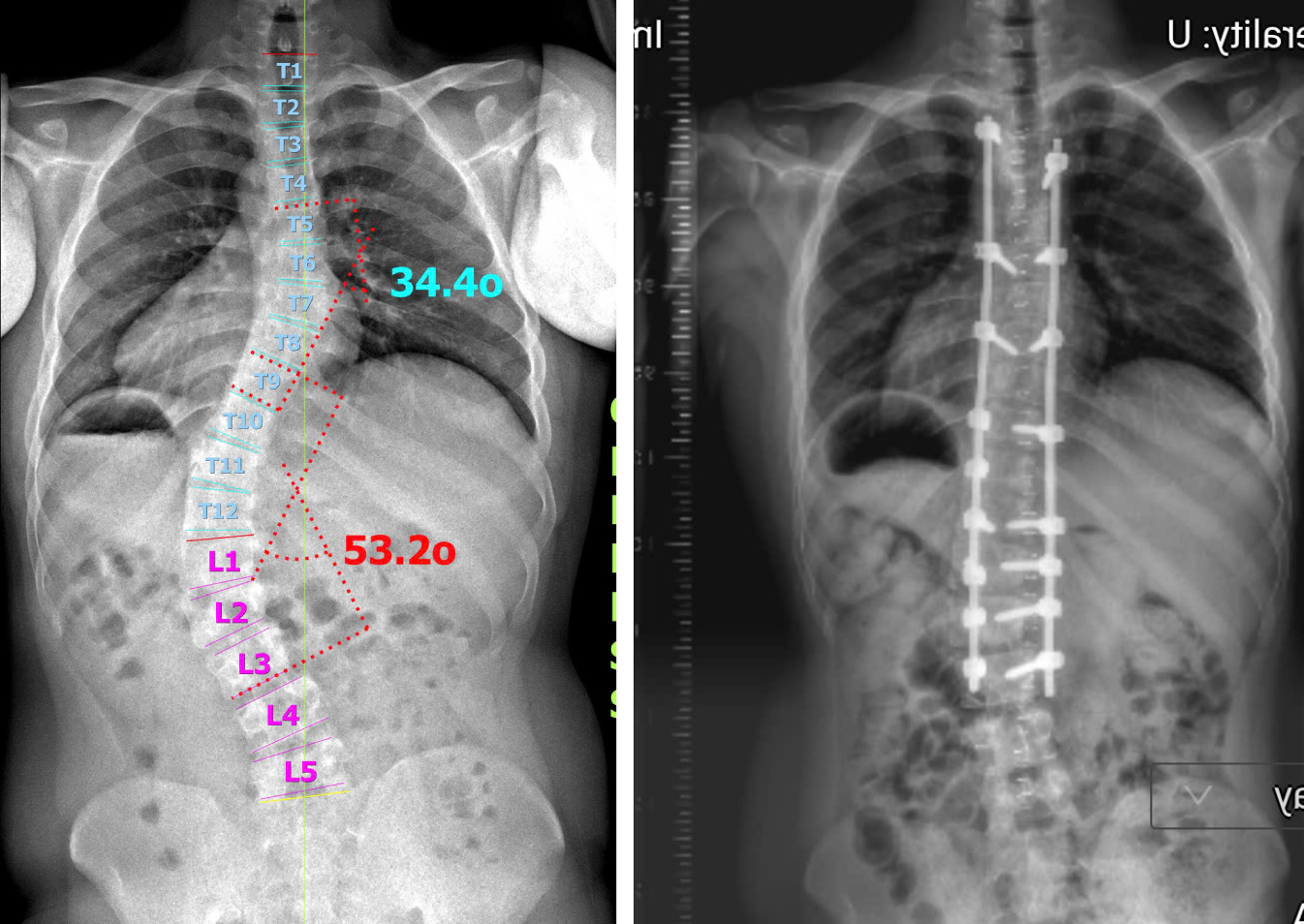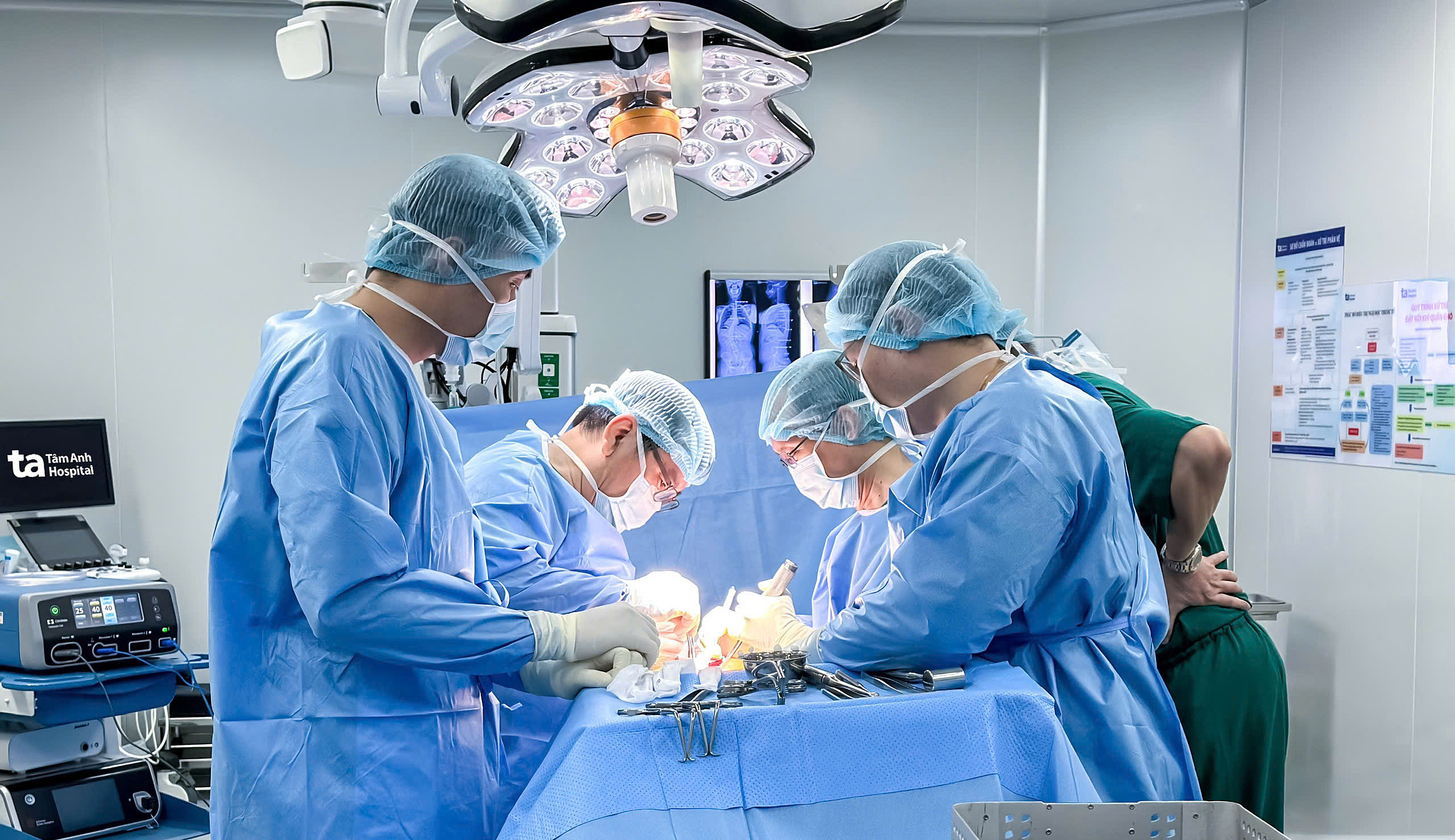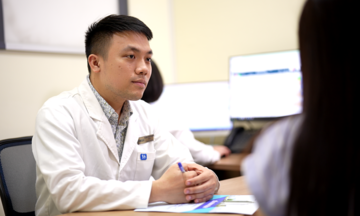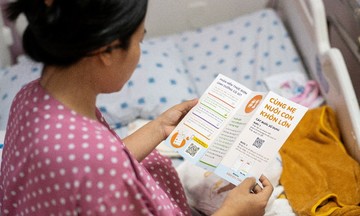Linh began experiencing a sideways curvature of his spine almost a year ago. He received conservative treatment including physiotherapy and bracing, but his condition didn't improve. X-rays at Tam Anh General Hospital in Ho Chi Minh City revealed two distinct curves in his spine: a 34-degree curve to the right in the thoracic region and a 53-degree curve to the left in the lumbar region.
Associate Professor, Doctor Ho Huu Dung, Deputy Director of the Center for Orthopedic Trauma, explained that a normal spine doesn't curve sideways (0-degree curve). Scoliosis in adolescents is often idiopathic (of unknown cause). "Linh's spinal curvature was substantial and could have continued to increase by 1-3 degrees annually, leading to spinal degeneration, chronic back pain, spondylolisthesis, and nerve compression," Dr. Dung said. Linh also faced the risk of reduced lung capacity, causing shortness of breath during exertion.
Doctors recommended posterior spinal fusion surgery, combined with specialized screws to reshape the spine. This is an effective method for correcting severe and complex scoliosis cases.
 |
X-rays show Linh's curved spine (left) and after surgery. Photo: Hospital provided |
Surgeons used 17 metal screws to fix Linh's curved vertebrae, then connected these screws with metal rods to reshape the spine to its normal form. "In severe scoliosis cases, 20 or more screws may be necessary," Dr. Dung said.
Due to the severity of the curvature, excessive straightening could have caused nerve damage, leading to paralysis. Therefore, doctors used a spinal cord function monitoring device to ensure that Linh didn't experience any neurological complications while maximizing the straightening of the spine. After surgery, Linh's lumbar curvature was corrected to 17.2 degrees and the thoracic curvature to 15.9 degrees.
A week after the operation, Linh could perform basic activities and walk unaided. His spinal shape was restored, significantly improving his posture and mobility, and preventing the long-term progression of scoliosis. Depending on the bone healing rate, Dr. Dung estimates that Linh will be able to participate in light sports such as swimming and walking within three to six months. More strenuous activities like football and basketball would typically be possible after 6-12 months, once the bones have fully healed.
 |
Dr. Dung (second from the right) performs Linh's surgery. Photo: Hospital provided |
According to Dr. Dung, detecting scoliosis in adolescents requires regular screening, especially for children with a family history of the condition. Observing posture and the balance of the thoracic and lumbar spine are crucial. Scoliosis often progresses silently without specific symptoms, gradually worsening over time due to daily activities and movement.
If detected early, scoliosis can be treated conservatively with physiotherapy exercises to strengthen core muscles, improve flexibility, and stabilize spinal function; and wearing a brace to support posture. When the spinal curvature exceeds 40 degrees, surgery is necessary to reshape and fix the spine with screws.
Phi Hong












